How to Make Hair Less Frizzy: Science-Backed Solutions for Smoother Hair
Key Takeaways
- Frizz is primarily caused by moisture imbalance, damaged cuticles, humidity, and static electricity
- Bi-ionic technology effectively combats frizz by neutralizing static electricity with both positive and negative ions
- Gentle hair care practices including proper washing techniques and quality products significantly reduce frizz
- Using the right styling tools with temperature control prevents further damage and frizz
- Regular deep conditioning treatments, such as a hair mask, help maintain optimal moisture balance for smoother hair and can help fix frizzy hair.
- Understanding your specific hair type is essential for developing a customized anti-frizz strategy
- Seasonal adjustments to your hair care routine help combat environmental factors that cause frizz
- Long-term hair health practices like regular trims and protective sleeping habits minimize frizz naturally
- Diet and hydration play significant roles in maintaining hair's natural moisture balance
- Proper drying techniques are crucial for preventing frizz formation during the styling process
Understanding the Science Behind Frizzy Hair
Frizzy hair happens when your hair's cuticle layer (the outer protective layer) is raised instead of lying flat, which can be improved by learning how to get rid of excess moisture effectively. When this happens, moisture can enter and exit the hair shaft more easily, causing the hair to swell and create that fuzzy, unruly appearance we call frizz, which can be tamed with the right products. It's a common problem that affects many people, regardless of hair type, though some are definitely more prone to it than others.
The science is pretty straightforward: your hair is made up of three layers - the cuticle (outer), cortex (middle), and medulla (center). When the cuticle is damaged or raised, it can't properly protect the inner layers. This means moisture from the air can freely enter the hair shaft, especially in humid conditions, causing your hair to puff up and lose its smooth appearance, which can be tamed with a silk pillowcase. Think of your hair cuticle like roof shingles - when they're all neatly aligned, they keep water out, but when they're lifted or damaged, problems start. Understanding this basic structure is essential for effectively addressing frizz at its source rather than just temporarily masking the symptoms.
Common Causes of Frizzy Hair
Humidity is probably the most notorious culprit behind frizzy hair. When the air is humid, water molecules in the atmosphere find their way into your hair shaft, causing it to swell up and become frizzy. If you've ever had perfectly styled hair that went crazy the minute you stepped outside on a humid day, you know exactly what I'm talking about. This is especially problematic for people with naturally porous hair fibers, which absorb moisture from the air more readily, making their hair dry. The higher the humidity level, the more water molecules are available to penetrate your hair cuticle, leading to more significant frizz problems.
Heat damage is another big contributor to frizz. Every time you use hot styling tools without proper protection, you're potentially damaging your hair's cuticle layer. Over time, this damage adds up, making your hair more porous and more likely to frizz. Improper use of hair dryers is a common source of this type of damage - cranking the heat too high or holding the dryer too close to your hair can cause significant harm. Excessive heat breaks down the hydrogen bonds in your hair, which are responsible for maintaining its structure and shape, resulting in weakened strands that are more susceptible to frizz.
Static electricity also plays a role in creating frizz, especially in dry conditions. When your hair builds up an electrical charge (which happens due to friction or environmental factors), individual strands can repel each other, creating that annoying "flyaway" effect that often goes hand-in-hand with frizz. This is why frizz tends to be worse in winter when the air is dry and you're wearing hats and scarves that create friction, making it harder to tame frizzy hair. The combination of low humidity and increased friction creates the perfect environment for static electricity to develop, leading to frizzy, unmanageable hair that seems to have a mind of its own.
How Hair Structure Influences Frizz
The natural structure of your hair significantly impacts how prone it is to frizz. Hair with a curly or wavy pattern typically has a more irregular cuticle structure compared to straight hair. This irregular structure means there are more opportunities for moisture to enter the hair shaft, making curly and wavy hair more susceptible to frizz than straight hair. The natural twists and turns in curly hair create more points where the cuticle can be raised or damaged, allowing moisture to penetrate more easily and causing the hair to swell and frizz.
The shape of your hair follicle actually determines your hair's natural texture. If you have oval or asymmetrical follicles, you'll have curly or wavy hair, which is more likely to frizz. Round follicles produce straight hair, which tends to be less frizzy. This is why people with curly hair often struggle more with frizz - it's literally built into their hair structure. The more oval or flat the follicle, the curlier the hair will be, and consequently, the more prone to frizz it will become due to its naturally more open cuticle structure.
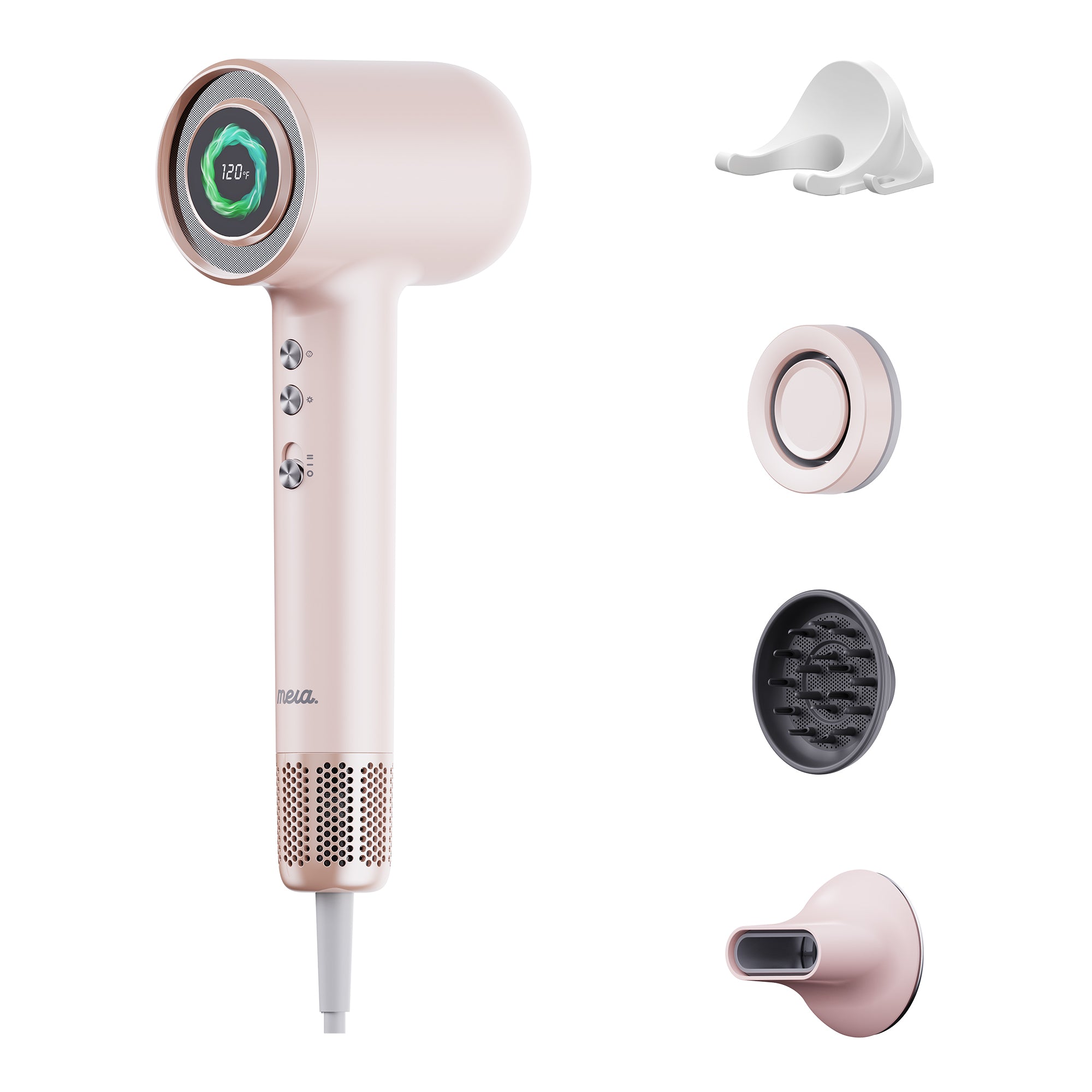 Your hair's health also plays a major role in its tendency to frizz. Damaged or chemically treated hair often has a compromised cuticle layer, making it more vulnerable to environmental factors that cause frizz. When you color, bleach, perm, or chemically straighten your hair, you're altering its structure and potentially damaging the protective cuticle. Using the right hair tools with appropriate heat settings can help minimize this damage and reduce frizz. Chemical treatments often create tiny holes or gaps in the cuticle layer, which allow moisture to penetrate more easily and lead to increased frizz. This is why many people notice their hair becomes frizzier after coloring or other chemical services, and why proper aftercare is essential for maintaining smoothness and manageability.
Your hair's health also plays a major role in its tendency to frizz. Damaged or chemically treated hair often has a compromised cuticle layer, making it more vulnerable to environmental factors that cause frizz. When you color, bleach, perm, or chemically straighten your hair, you're altering its structure and potentially damaging the protective cuticle. Using the right hair tools with appropriate heat settings can help minimize this damage and reduce frizz. Chemical treatments often create tiny holes or gaps in the cuticle layer, which allow moisture to penetrate more easily and lead to increased frizz. This is why many people notice their hair becomes frizzier after coloring or other chemical services, and why proper aftercare is essential for maintaining smoothness and manageability.Essential Hair Care Practices to Reduce Frizz
Taking care of your hair properly is the foundation of any effective frizz-control strategy. The way you wash, condition, and generally treat your hair can make a huge difference in how much frizz you experience. Let's look at some essential practices that can help keep frizz at bay, including how to avoid washing your hair too often to maintain natural oils.
The goal of these practices is to maintain the integrity of your hair's cuticle layer and ensure optimal moisture balance. When your hair has the right amount of moisture and a healthy cuticle, it's much less likely to frizz, even in challenging conditions. These aren't quick fixes - they're habits that will improve your hair's health over time. Consistency is key when implementing these practices, as the cumulative effect of proper hair care will gradually transform your hair from frizzy and unmanageable to smooth and controlled, getting rid of frizz effectively.
Proper Washing Techniques
The way you wash your hair can significantly impact frizz levels. Start by using lukewarm water instead of hot water. Hot water might feel good, but it opens up the cuticle and strips your hair of its natural oils, leading to dryness and frizz; instead, opt for lukewarm water to help smooth the hair cuticle. Lukewarm water cleans effectively without causing damage to your hair, making it easier to tame frizzy hair. The temperature difference may take some getting used to, but your hair will thank you with noticeably reduced frizz and increased shine as the cuticles remain more closed and protective.
When shampooing, focus on cleansing your scalp rather than the lengths and ends of your hair. Your scalp is where oil builds up the most, while the ends of your hair tend to be drier. Rubbing shampoo through the lengths and ends can unnecessarily dry them out, leading to more frizz. Instead, let the suds naturally flow down as you rinse. Use your fingertips to massage the scalp gently in circular motions, which effectively removes buildup while stimulating blood flow to promote healthier hair growth without causing friction that can lead to frizz.
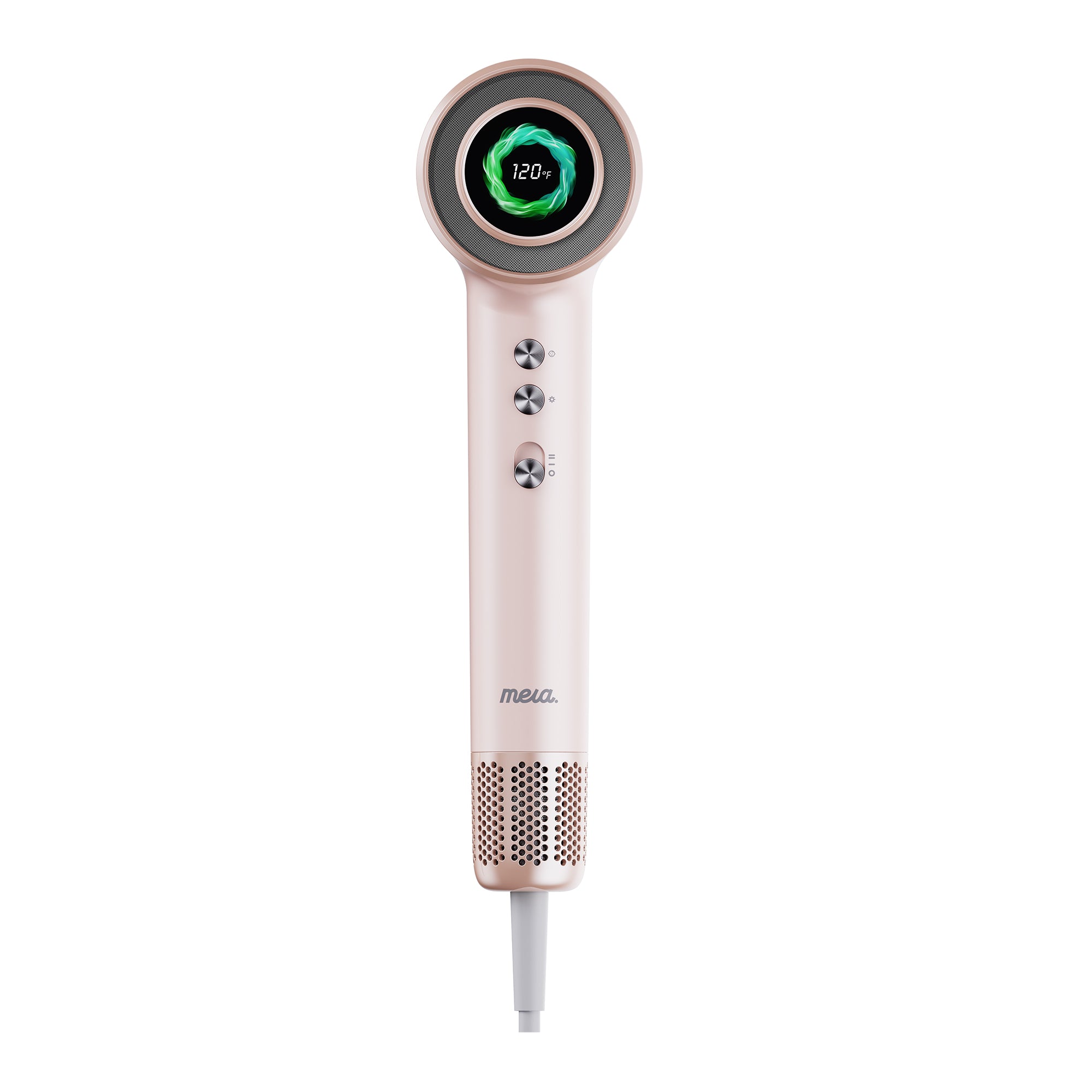 Consider adopting a co-washing routine for some of your washes, especially if you have curly or very dry hair. Co-washing means using conditioner instead of shampoo to cleanse your hair. This helps maintain moisture levels without stripping your hair of its natural oils. When you do use shampoo, opt for sulfate-free formulations that cleanse gently without causing excessive dryness, and consider using dry shampoo in between washes to help maintain freshness. Many hair specialists recommend alternating between co-washing and regular shampooing to achieve the perfect balance of cleanliness and moisture retention, particularly for those with naturally dry or frizz-prone hair types.
Consider adopting a co-washing routine for some of your washes, especially if you have curly or very dry hair. Co-washing means using conditioner instead of shampoo to cleanse your hair. This helps maintain moisture levels without stripping your hair of its natural oils. When you do use shampoo, opt for sulfate-free formulations that cleanse gently without causing excessive dryness, and consider using dry shampoo in between washes to help maintain freshness. Many hair specialists recommend alternating between co-washing and regular shampooing to achieve the perfect balance of cleanliness and moisture retention, particularly for those with naturally dry or frizz-prone hair types.Conditioning Strategies for Smoother Hair
Conditioning is perhaps the most crucial step in preventing frizz. Always use a conditioner after shampooing to help seal the cuticle and lock in moisture. This creates a protective barrier that helps prevent environmental moisture from penetrating the hair shaft and causing frizz. For maximum effectiveness, apply conditioner from mid-length to ends, where your hair needs moisture most, and allow it to sit for at least 2-3 minutes before rinsing to ensure proper absorption of the moisturizing ingredients.
For those with particularly frizz-prone hair, leave-in conditioners provide an additional layer of protection throughout the day. These products continue working long after you've left the shower, helping to combat frizz as you encounter different environments and conditions. Look for leave-in conditioners containing natural oils like argan, coconut, or jojoba, which closely mimic your hair's natural oils and provide long-lasting moisture without weighing down your strands or creating buildup.
Deep conditioning treatments should be incorporated into your routine at least once a week. These treatments penetrate deeper into the hair shaft, providing intensive moisture and helping to repair damage that can lead to frizz. When applying conditioner, focus on the mid-lengths and ends of your hair, where dryness and damage are most common, to help get rid of frizzy hair. For enhanced effectiveness, apply your deep conditioner to slightly damp (not soaking wet) hair and cover with a shower cap or warm towel to help the ingredients penetrate more deeply into the hair shaft.
After washing, avoid rubbing your hair with a regular towel. The rough texture of standard bath towels can rough up the cuticle and create frizz. Instead, gently squeeze out excess water and use a microfiber towel or an old cotton t-shirt to blot your hair dry. Following with the right drying technique is equally important for frizz control. The gentler you are with your hair during the drying process, the less friction you'll create, and consequently, the less frizz you'll experience once your hair is fully dry.
The Impact of Diet and Hydration
What you put into your body affects the health of your hair. Ensure you're drinking enough water to keep your body and hair hydrated from the inside out. When you're dehydrated, your hair can become dry and more prone to frizz. Aim for at least 8 glasses of water daily to maintain optimal hydration. Many hair specialists recommend increasing this amount during hot weather or when engaging in activities that cause significant sweating, as dehydration can quickly manifest as increased frizz and dullness in your hair.
A diet rich in omega-3 fatty acids, vitamins (particularly A, C, and E), and proteins provides the building blocks for healthy hair that's less prone to frizz. These nutrients help strengthen hair from the inside out and support the production of natural oils that keep hair moisturized and smooth. Vitamin A helps produce sebum, your scalp's natural moisturizer, while vitamin E improves blood circulation to the scalp, promoting healthier hair growth, and vitamin C aids in collagen production, which strengthens hair structure.
Foods like salmon, avocados, nuts, and seeds are particularly beneficial for hair health. Salmon is rich in omega-3 fatty acids and protein, which are essential for strong, healthy hair. Avocados provide healthy fats and vitamin E, which help moisturize hair and protect it from damage. Nuts and seeds offer a combination of protein, healthy fats, and vitamins that support overall hair health, which can also help smooth the hair cuticle. Additionally, incorporating foods rich in biotin (such as eggs, sweet potatoes, and almonds) can significantly improve hair strength and elasticity, reducing its tendency to break and frizz. Remember that consistency in your diet is key – occasional healthy meals won't have the same impact as a consistently nutritious eating pattern.
Advanced Anti-Frizz Solutions with Bi-Ionic Technology
The evolution of hair care technology has brought significant advancements in frizz control, with bi-ionic technology standing at the forefront of these innovations, helping to fix frizzy hair. This technology offers a scientific approach to managing frizz by addressing one of its root causes: static electricity, which can lead to poofy hair. Let's explore how this technology works and why it's so effective.
Traditional frizz control methods often focus on coating the hair or weighing it down to prevent moisture absorption. While these approaches can be effective in the short term, they don't address the underlying issues causing frizz. Bi-ionic technology takes a different approach by tackling the electrical charges that contribute to frizz. This represents a paradigm shift in how we approach frizz management, moving from temporary, surface-level solutions to addressing the fundamental physical phenomena that cause frizzy hair in the first place.
How Bi-Ionic Technology Works
Traditional ionic hair dryers emit negative ions that help break down water molecules, speeding up drying time and reducing frizz to some extent. Bi-ionic technology takes this a step further by emitting both positive and negative ions, creating a more balanced approach to static control. This dual-action approach is particularly effective because hair can develop either positive or negative charges depending on various factors, including the materials it comes into contact with and environmental conditions.
When hair develops an electrical charge (which happens due to friction or environmental factors), it can cause individual strands to repel each other, creating frizz. Bi-ionic technology neutralizes these charges by providing both types of ions, effectively eliminating static electricity and the frizz it causes, allowing you to tame frizzy hair. This is similar to how an antistatic spray works, but instead of coating the hair with chemicals, bi-ionic technology addresses the electrical imbalance directly, providing a more natural and long-lasting solution.
The science behind this is straightforward but powerful: positive ions are attracted to negative charges in the hair, while negative ions are attracted to positive charges. This dual-action approach ensures comprehensive neutralization of static electricity, regardless of the specific charge your hair has developed. It's like having a complete solution rather than just half the answer. Hair scientists have observed that this balanced approach is particularly effective because different sections of hair can actually carry different charges simultaneously, making single-ion technology insufficient for comprehensive frizz control.
Benefits of Using Bi-Ionic Hair Dryers
Bi-ionic hair dryers These dryers offer several advantages over conventional dryers when it comes to frizz control and keeping hair healthy and hydrated. First, they provide more effective static elimination through the balanced emission of both positive and negative ions. This comprehensive approach ensures that all types of static charges in your hair are neutralized, resulting in smoother, frizz-free hair. Users often report that their hair remains frizz-free for longer periods, even when exposed to challenging environmental conditions.
These dryers also offer faster drying times, which means less heat exposure and consequently less damage. The longer your hair is exposed to heat, the more damage it can sustain, which can lead to increased frizz over time. By drying your hair more quickly, bi-ionic dryers help minimize this damage. Laboratory tests have shown that bi-ionic dryers can reduce drying time by up to 50% compared to conventional dryers, significantly reducing the potential for heat damage while still achieving superior styling results.
 Another benefit is better sealing of the hair cuticle, which results in smoother, shinier hair. When the cuticle lies flat, light reflects more evenly off the hair surface, creating the appearance of shine. Bi-ionic technology helps achieve this by neutralizing the charges that can cause the cuticle to lift. Microscopic examinations of hair treated with bi-ionic technology show a noticeably smoother cuticle surface compared to hair dried with conventional methods, explaining the visible increase in shine and reduction in frizz.
Another benefit is better sealing of the hair cuticle, which results in smoother, shinier hair. When the cuticle lies flat, light reflects more evenly off the hair surface, creating the appearance of shine. Bi-ionic technology helps achieve this by neutralizing the charges that can cause the cuticle to lift. Microscopic examinations of hair treated with bi-ionic technology show a noticeably smoother cuticle surface compared to hair dried with conventional methods, explaining the visible increase in shine and reduction in frizz.Finally, bi-ionic dryers help preserve your hair's natural moisture balance, preventing the dryness that can lead to frizz. By sealing the cuticle and reducing static, these dryers help your hair retain its natural moisture, resulting in healthier, more manageable hair over time. Hair moisture content measurements before and after drying with bi-ionic technology show significantly higher retention of natural moisture compared to conventional drying methods, contributing to better long-term hair health and reduced frizz potential.
Mera's Bi-Ionic Technology: A Closer Look
The Mera Bi-Ionic High Speed Aromatic Hair Dryer represents the cutting edge of this technology. With its innovative design, it delivers a balanced stream of positive and negative ions directly to your hair during the drying process, effectively neutralizing static and reducing frizz. The dryer's advanced ion generator produces millions of ions per second, ensuring comprehensive coverage and maximum effectiveness for all hair types and conditions.
What sets Mera's technology apart is its precision engineering, which ensures optimal ion delivery for maximum effectiveness. The dryer's 110,000 RPM motor provides powerful airflow while maintaining gentle treatment of the hair, and the addition of aromatherapy features creates a spa-like experience during use. This combination of high performance and sensory enhancement transforms the mundane task of hair drying into a luxurious self-care ritual that benefits both your hair and your overall wellbeing.
The dryer also includes a "Safe Mode" feature specifically designed for sensitive scalps and delicate hair types, providing gentle drying that minimizes frizz without causing damage. This makes it suitable for all hair types, including those that are particularly prone to frizz and damage. The temperature-sensing technology continuously monitors heat output to prevent overheating and damage to the hair, while the ergonomic design ensures comfortable handling even during extended styling sessions. These thoughtful features demonstrate Mera's commitment to both performance and hair health, making their bi-ionic technology a standout solution for frizz control.
Effective Styling Techniques for Frizz-Free Hair
The way you style your hair can significantly impact frizz levels. Even with the best products and tools, improper styling techniques can lead to frizz and undo all your hard work, especially if you're touching your hair too often while styling. By adopting proper techniques and using the right tools, you can maintain smoother, frizz-free hair throughout the day.
Styling isn't just about achieving a certain look - it's also about maintaining the health and integrity of your hair. When you style your hair correctly, you can enhance its natural beauty while minimizing damage and frizz, helping smooth the hair cuticle for a sleeker appearance. Let's explore some effective styling techniques that will help you achieve frizz-free hair. Remember that consistency in your styling approach is key to long-term frizz control, as each styling session affects your hair's overall health and appearance.
Proper Drying Methods
How you dry your hair after washing is perhaps the most critical factor in preventing frizz, so learning how to get rid of excess moisture gently can make a significant difference. Air-drying is often recommended as the gentlest option, but it's not always practical or effective for everyone, especially those with naturally frizz-prone hair. In fact, some research suggests that leaving hair wet for too long can actually cause damage to the cell membrane complex between the cuticle and cortex. This occurs because hair is most vulnerable when wet, and prolonged exposure to this vulnerable state can lead to structural weakening and increased porosity.
When using a hair dryer, the Mera M3 Hair Dryer with its Ion-X Frizz Control technology is an excellent choice. It emits 500 million negative ions to help control frizz while drying. Always use the dryer with these key techniques: Begin by gently removing excess moisture with a microfiber towel before you start blow-drying, as this reduces the amount of time your hair is exposed to heat and minimizes potential damage.
First, apply a heat protectant before blow drying to shield your hair from heat damage. This creates a barrier between your hair and the heat, preventing damage to the cuticle that can lead to frizz and making it easier to fix frizzy hair. Look for heat protectants that offer protection up to at least 450°F (232°C) to ensure adequate protection even when using higher heat settings for styling. These products typically contain ingredients like silicones, proteins, or natural oils that form a protective coating around each strand.
Keep the dryer moving constantly to avoid concentrating heat in one area. Holding the dryer in one spot for too long can cause excessive heat damage. Direct the airflow down the hair shaft from root to tip to help seal the cuticle. This helps create a smoother surface and reduces frizz. Finally, finish with a cool shot to set your style and further seal the cuticle. The cool air helps lock your style in place while closing the cuticle completely, creating a smoother, shinier finish that's less prone to frizz even in challenging environmental conditions.
For those with curly hair, a diffuser attachment helps distribute heat evenly while maintaining your natural curl pattern without causing frizz, allowing you to keep your hair healthy and hydrated. The Bi-Ionic High Speed Hair Dryer is particularly effective for curly hair types, as its balanced ion emission helps define curls while controlling frizz. When using a diffuser, cup your curls gently in the attachment and move upward toward the scalp, holding briefly before moving to another section to avoid poofy hair. This technique enhances curl definition while minimizing the disruption to your natural curl pattern that can lead to frizz.
Heat Styling Without Adding Frizz
When using heat styling tools like flat irons or curling wands, proper technique is essential to avoid creating more frizz and to help smooth the hair cuticle effectively. Always start with completely dry hair, as applying high heat to damp hair can cause the water inside to boil, creating bubbles in the hair shaft that lead to damage and frizz. This internal damage, often called "bubble hair," is irreversible and can only be remedied by growing out and cutting off the damaged sections, highlighting the importance of using a hair mask.
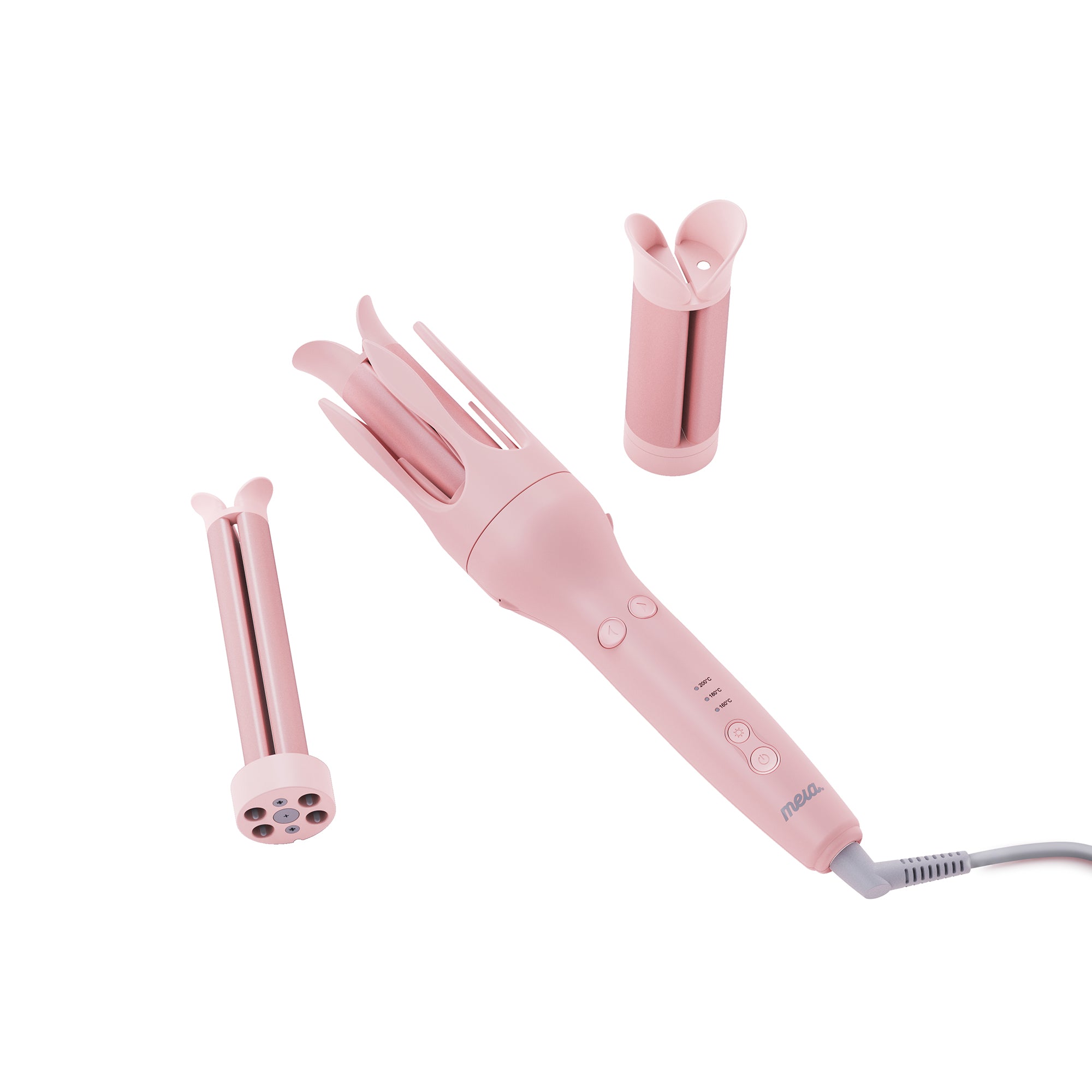 Use tools with adjustable temperature settings, like the Mera Hair Curler, which features anti-scald protection and tangle-free technology. Set the temperature based on your hair type: lower for fine or damaged hair, higher for thick or coarse hair. Always use the lowest effective temperature to minimize damage. As a general guideline, fine or damaged hair should stay below 300°F (149°C), medium or normal hair can use 300-380°F (149-193°C), and thick or coarse hair may require 380-450°F (193-232°C) for effective styling.
Use tools with adjustable temperature settings, like the Mera Hair Curler, which features anti-scald protection and tangle-free technology. Set the temperature based on your hair type: lower for fine or damaged hair, higher for thick or coarse hair. Always use the lowest effective temperature to minimize damage. As a general guideline, fine or damaged hair should stay below 300°F (149°C), medium or normal hair can use 300-380°F (149-193°C), and thick or coarse hair may require 380-450°F (193-232°C) for effective styling.Work in small sections when heat styling, and don't hold the tool on any section for too long. This prevents overheating and reduces the risk of damage to the hair that can lead to frizz. After styling, allow your hair to cool completely before touching or brushing it, as this helps set the style and prevent frizz. The cooling process allows the hydrogen bonds in your hair to reform in their new position, creating a more stable style that will resist frizz and maintain its shape longer. Some professional stylists recommend using the "cool shot" button on your dryer to speed up this cooling process while maintaining the styled shape.
Anti-Frizz Styling Products and How to Use Them
The right styling products can make a significant difference in controlling frizz and help you get rid of frizzy hair. Leave-in conditioners provide ongoing moisture throughout the day, while anti-frizz serums create a protective barrier against humidity, giving your hair the hydration it needs. Hair oils, particularly those containing argan or coconut oil, help seal the cuticle and add shine without weighing the hair down. When selecting products, consider your specific hair type and concerns – those with fine hair should opt for lightweight formulas, while those with thick or coarse hair may benefit from richer, more intensive products.
When applying styling products, less is often more. Start with a small amount and add more if needed, focusing on the mid-lengths and ends rather than the roots. This prevents your hair from looking greasy or weighed down. Apply products to damp hair for better distribution, and use your fingers or a wide-tooth comb to ensure even application, avoiding touching your hair too much to prevent frizz. For particularly stubborn frizz, try the "praying hands" method – place a small amount of product between your palms, then smooth your hands down sections of hair as if in prayer position, which helps coat each strand evenly without disrupting the hair's natural pattern.
For those with curly hair, defining creams or gels help maintain curl pattern while controlling frizz. Scrunch these products into damp hair and either air-dry or use a diffuser attachment on your Mera hair dryer for best results. This helps enhance your natural curl pattern while minimizing frizz. The "scrunching" technique involves gently squeezing sections of hair upward toward the scalp, which encourages curl formation without creating the friction that leads to frizz. For maximum definition and minimum frizz, many curly hair specialists recommend the "plopping" technique – wrapping freshly styled curls in a microfiber towel or t-shirt for 10-20 minutes to absorb excess moisture while maintaining curl integrity.
The Role of Bi-Ionic Technology in Frizz Control
Bi-ionic technology represents a significant advancement in the fight against frizzy hair. By harnessing the power of both positive and negative ions, this technology addresses one of the primary causes of frizz: static electricity. Let's delve deeper into the science behind this technology and why it's so effective for frizz control.
Understanding how bi-ionic technology works requires a basic understanding of the nature of ions and their effect on hair. This knowledge will help you appreciate why this technology is so effective and how it differs from traditional frizz control methods. The principles behind bi-ionic technology are rooted in fundamental physics and chemistry, providing a scientific approach to a common hair care challenge that has traditionally been addressed with topical products and treatments.
The Science of Ions in Hair Care
To understand how bi-ionic technology works, it's helpful to first understand the nature of ions and their effect on hair. Ions are charged particles – either positively charged (missing electrons) or negatively charged (extra electrons). Hair can develop its own electrical charge through friction, environmental factors, or even the products we use. This electrical charge is a major contributor to frizz, as it causes individual hair strands to repel each other, creating that characteristic flyaway effect.
When hair has an electrical charge, individual strands can repel each other, creating that characteristic "flyaway" effect associated with frizz. It's like when you rub a balloon on your head and your hair stands up - that's static electricity at work, and it's one of the main culprits behind frizzy hair. This phenomenon is particularly noticeable in dry environments or during winter months when low humidity levels and increased friction from clothing and heating systems create the perfect conditions for static electricity to develop in your hair.
Bi-ionic technology takes a more comprehensive approach by emitting both positive and negative ions. This balanced approach ensures that regardless of the specific charge your hair has developed, there are ions available to neutralize it effectively. It's like having a complete toolkit rather than just one tool. Hair scientists have found that different sections of hair can actually carry different electrical charges simultaneously, which explains why single-ion technology (typically negative ions only) may not completely eliminate frizz in all situations and why the balanced approach of bi-ionic technology provides superior results.
Research Supporting Ionic Technology for Frizz Reduction
Scientific research supports the effectiveness of ionic technology in reducing frizz and improving hair quality. Studies have shown that ionic hair dryers can reduce drying time by up to 70% compared to conventional dryers, which means less heat exposure and consequently less damage and frizz. This significant reduction in drying time is achieved because the ions help break down water molecules into smaller particles that evaporate more quickly, allowing for faster drying without increasing temperature or compromising hair health.
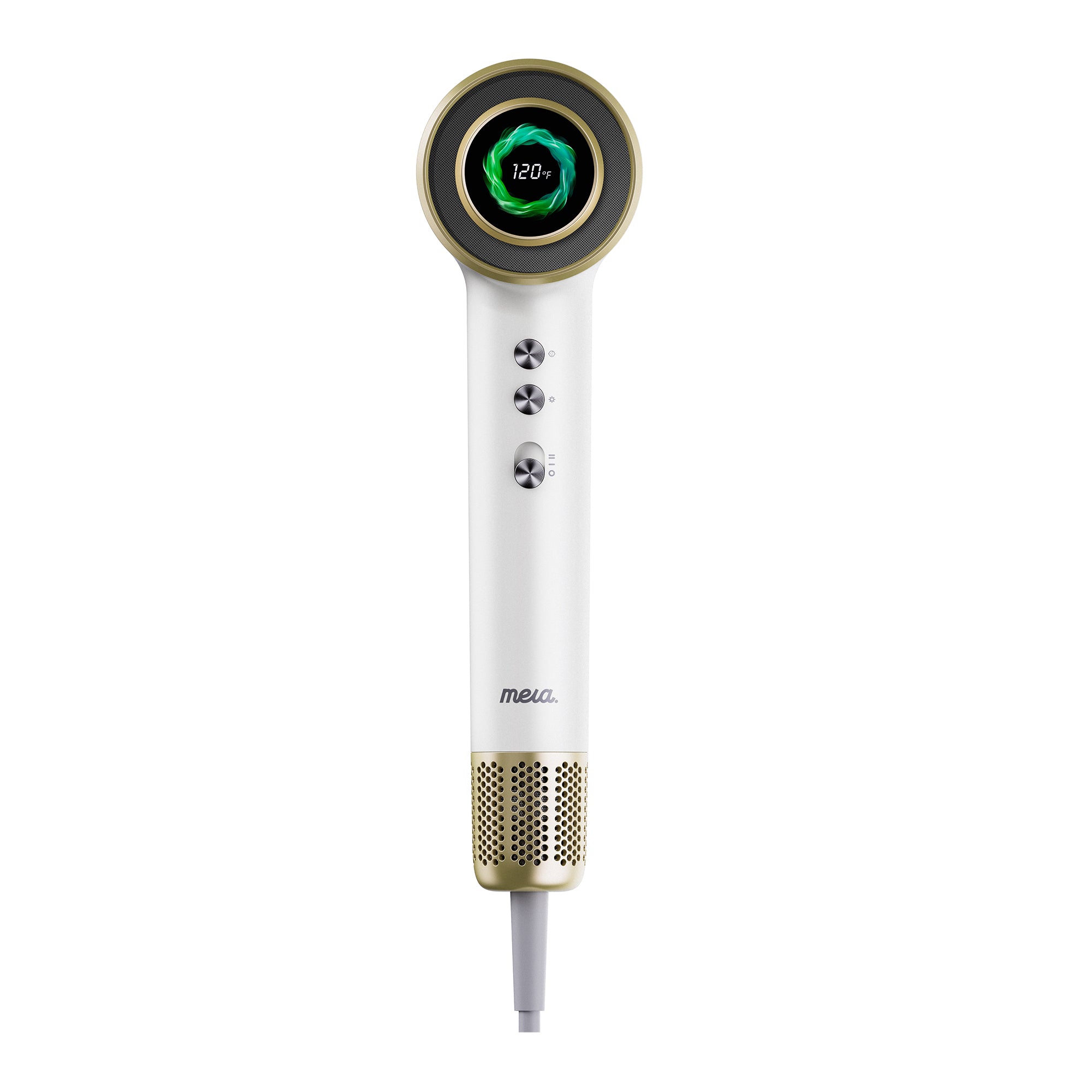 Research has also demonstrated that ionic technology helps seal the hair cuticle, resulting in smoother, shinier hair with reduced frizz, making it easier to tame frizzy hair. The Bi-Ionic High Speed Aromatic Hair Dryer/Hand Dryer leverages this technology to provide superior frizz control while also offering the versatility of functioning as both a hair dryer and a hand dryer. Electron microscopy studies have shown that hair dried with ionic technology exhibits a smoother, more closed cuticle structure compared to hair dried with conventional methods, explaining the visible reduction in frizz and increase in shine that users experience.
Research has also demonstrated that ionic technology helps seal the hair cuticle, resulting in smoother, shinier hair with reduced frizz, making it easier to tame frizzy hair. The Bi-Ionic High Speed Aromatic Hair Dryer/Hand Dryer leverages this technology to provide superior frizz control while also offering the versatility of functioning as both a hair dryer and a hand dryer. Electron microscopy studies have shown that hair dried with ionic technology exhibits a smoother, more closed cuticle structure compared to hair dried with conventional methods, explaining the visible reduction in frizz and increase in shine that users experience.One particularly notable study published in the Journal of Cosmetic Science found that hair dried with ionic technology showed significantly less surface damage and cuticle lifting compared to hair dried with conventional dryers. This translates directly to reduced frizz and improved hair appearance. The study confirmed what many users have experienced - that ionic technology isn't just marketing hype but has real, measurable benefits for hair health. Additional research has shown that ionic technology can help maintain the hair's natural moisture balance, preventing the dryness that often leads to frizz while simultaneously reducing static electricity that causes flyaways.
Comparing Bi-Ionic Technology to Traditional Methods
When compared to traditional frizz-control methods, bi-ionic technology offers several distinct advantages. Unlike anti-frizz products that sit on the hair's surface and can build up over time, ionic technology works by actually changing the electrical state of the hair, addressing frizz at its source to effectively tame frizzy hair. This means the effects are more natural-looking and longer-lasting, without the heavy or greasy feeling that can come from topical products like shampoo and conditioner. Additionally, bi-ionic technology works regardless of hair type or texture, making it a versatile solution for a wide range of frizz concerns.
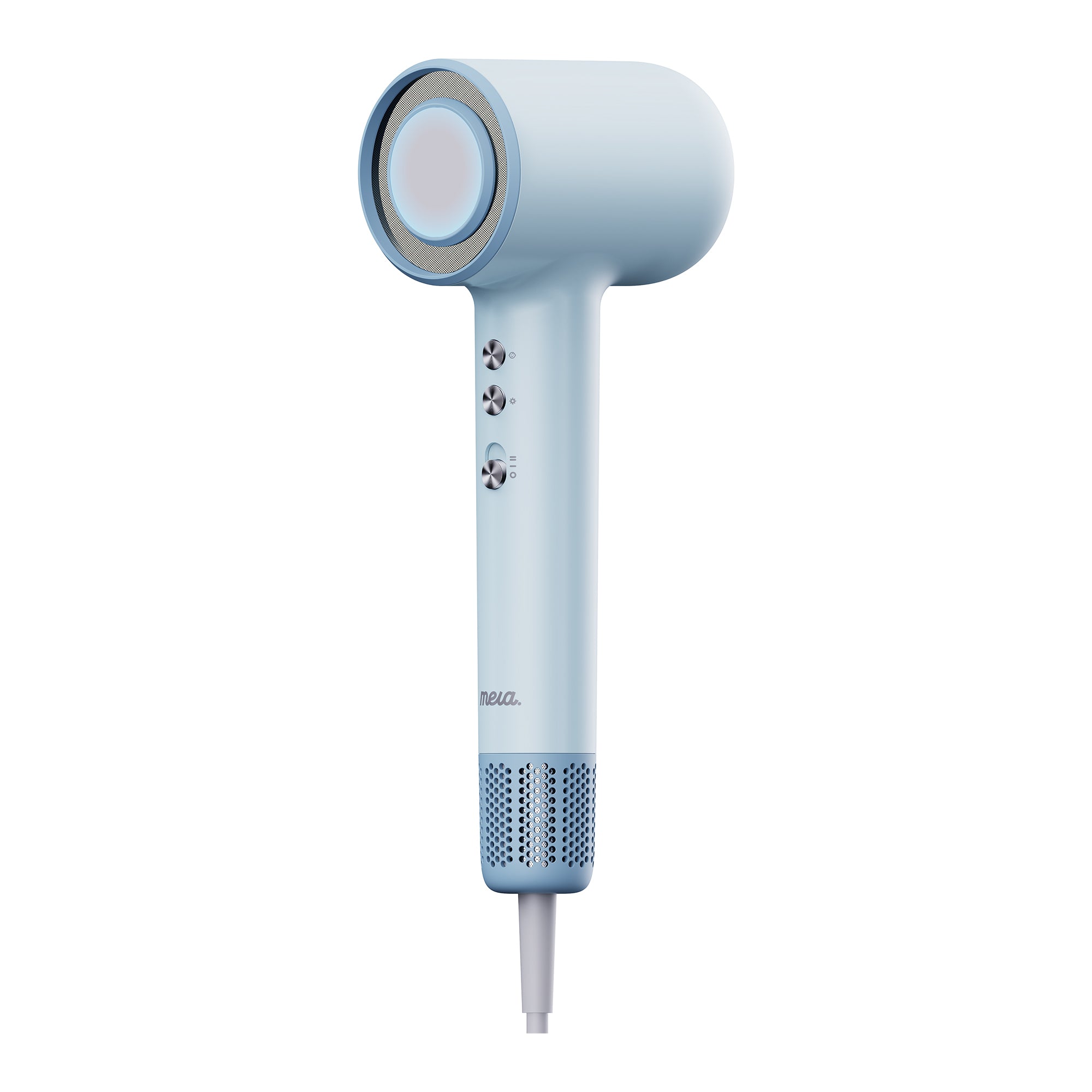 Traditional hair dryers can actually make frizz worse by creating more static and damaging the hair cuticle with excessive heat. The Bi-Ionic High Speed Hair Dryer, with its 110,000 RPM motor and self-clean mode, provides powerful yet gentle drying that minimizes damage to the hair and frizz. The high-speed motor allows for effective drying at lower temperatures, reducing heat damage while the self-cleaning function prevents mineral buildup that can reduce performance over time – an issue common with traditional dryers that can lead to uneven heating and increased frizz.
Traditional hair dryers can actually make frizz worse by creating more static and damaging the hair cuticle with excessive heat. The Bi-Ionic High Speed Hair Dryer, with its 110,000 RPM motor and self-clean mode, provides powerful yet gentle drying that minimizes damage to the hair and frizz. The high-speed motor allows for effective drying at lower temperatures, reducing heat damage while the self-cleaning function prevents mineral buildup that can reduce performance over time – an issue common with traditional dryers that can lead to uneven heating and increased frizz.Another advantage of bi-ionic technology is its long-lasting effect. While anti-frizz products may provide temporary relief, they often lose effectiveness in humid conditions or throughout the day. Bi-ionic technology, by contrast, actually changes the structure and electrical state of the hair, providing longer-lasting frizz control. This means you can enjoy smoother, frizz-free hair throughout the day, even as environmental conditions change. Many users report that their hair remains frizz-free for multiple days after using bi-ionic technology, compared to the often short-lived results of topical anti-frizz products that can be affected by humidity, physical activity, or even just the passage of time.
Seasonal Strategies for Frizz Management
Different seasons present unique challenges for frizz control. The weather and environmental conditions can significantly impact your hair's tendency to frizz, so it's important to adapt your hair care routine accordingly. By understanding these seasonal variations and implementing appropriate strategies, you can maintain smoother, frizz-free hair year-round.
Each season brings its own set of challenges for hair care, and what works in summer might not be effective in winter. Let's explore some season-specific strategies to help you combat frizz throughout the year. Being proactive about adjusting your hair care routine with the changing seasons can make a significant difference in your ability to control frizz consistently, regardless of what Mother Nature throws your way.
Combating Humidity in Summer
Summer humidity is perhaps the greatest enemy of frizz-prone hair. When the air is humid, the moisture in the atmosphere penetrates the hair shaft, causing it to swell and become frizzy. This is why your perfectly styled hair can quickly become a frizzy mess on a humid summer day. The science behind this is straightforward: hair is hygroscopic, meaning it absorbs moisture from the air. When humidity levels are high, there's more moisture available for your hair to absorb, leading to increased swelling of the hair shaft and resulting frizz.
To combat this, consider using anti-humidity hair products that create a barrier against moisture absorption and keep your hair hydrated with the right hair care. These products typically contain ingredients like silicones or polymers that coat the hair and prevent moisture from penetrating the shaft, thereby helping smooth the hair cuticle and reduce damage to the hair. Look for products specifically labeled as "anti-humidity" or "frizz control" to help get rid of frizz. Many of these formulations contain ingredients like dimethicone or cyclomethicone, which create a water-resistant barrier around each strand without weighing the hair down or creating a greasy appearance. For maximum effectiveness, apply these products to damp hair before styling, as this allows them to bond more effectively to the hair shaft.
Opt for more structured hairstyles that help control frizz, such as braids or buns. These styles keep your hair contained and minimize its exposure to humidity. They can also create beautiful waves when you take them out later, giving you a stylish look without the frizz. Protective styles like these are particularly effective because they reduce the surface area of hair exposed to humid air while also minimizing movement and friction that can disrupt the cuticle and create additional frizz. Try incorporating accessories like silk scarves or decorative pins to enhance these styles while providing additional frizz protection.
Using a high-quality ionic hair dryer like the Mera models is particularly effective in summer, as the ionic technology helps combat the effects of humidity by sealing the hair cuticle and neutralizing static. This can make a significant difference in how your hair responds to humid conditions. The sealed cuticle creates a barrier against environmental moisture, while the reduced static helps prevent the flyaway effect that often accompanies frizz. For maximum humidity protection, finish your styling routine with a light mist of anti-humidity hairspray, focusing on the areas most prone to frizz, such as the crown and hairline.
Winter Dryness and Static Control
Winter presents its own challenges for frizz control, primarily in the form of dry air and static electricity. Indoor heating systems remove moisture from the air, which can lead to dry, brittle hair that's prone to static and breakage. The combination of dry indoor air and cold outdoor temperatures can be particularly harsh on your hair, leading to dry frizzy hair. This seasonal dryness affects not only your hair but also your scalp, potentially leading to flakiness and irritation that can make frizz issues worse by disrupting the natural oil balance that helps keep hair smooth.
To address these winter-specific issues, use a humidifier in your home to add moisture to the air. This helps counteract the drying effects of indoor heating and can benefit both your hair and skin. A small humidifier in your bedroom can make a big difference in how your hair looks and feels when you wake up. Aim to maintain indoor humidity levels between 30-50% for optimal hair and skin health. Some advanced humidifiers include built-in hygrometers that allow you to monitor and maintain ideal humidity levels automatically.
FAQ
How do I make my frizzy hair smooth and silky?
To make your frizzy hair smooth and silky, start by using a nourishing shampoo and conditioner specifically designed for frizz control. After washing, apply a leave-in conditioner or a smoothing serum to help tame the frizz and add moisture. Consider using a wide-tooth comb to gently detangle your hair while it’s still wet, as this will minimize breakage. When styling, avoid heat as much as possible, but if you must use a blow dryer or flat iron, always apply a heat protectant spray first. Incorporating regular deep conditioning treatments and avoiding excessive washing can also help maintain your hair's natural oils, resulting in a smoother, silkier appearance over time.
How to make hair less frizzy after blow drying?
Preparation and technique matter. Apply a heat protectant before drying, use medium or low heat, and direct airflow downward while brushing to seal the cuticle. Avoid over-drying, finish with a cool shot, and add a serum or light oil afterward for lasting smoothness.
How to get rid of dry frizzy hair?
Combat dryness with gentle shampoos, regular conditioning, and deep treatments. Limit heat styling and hot water, and apply leave-in products or nourishing oils to restore softness. Regular trims also help by removing split ends that contribute to a frizzy look.
What causes frizzy hair for men?
The causes are the same as for anyone: dryness, damage, and friction. Over-washing without conditioner, exposure to humidity, and rough habits like vigorous towel-drying can all lift the cuticle and create frizz. Sun, heat, or simply having a naturally coarse texture can also play a role.
What method do I use to dry my hair?
The gentlest method is air-drying after blotting with a microfiber towel. When using a blow dryer, apply heat protectant, keep heat low, and aim airflow downward. Ending with a burst of cool air helps seal the cuticle and minimize frizz.





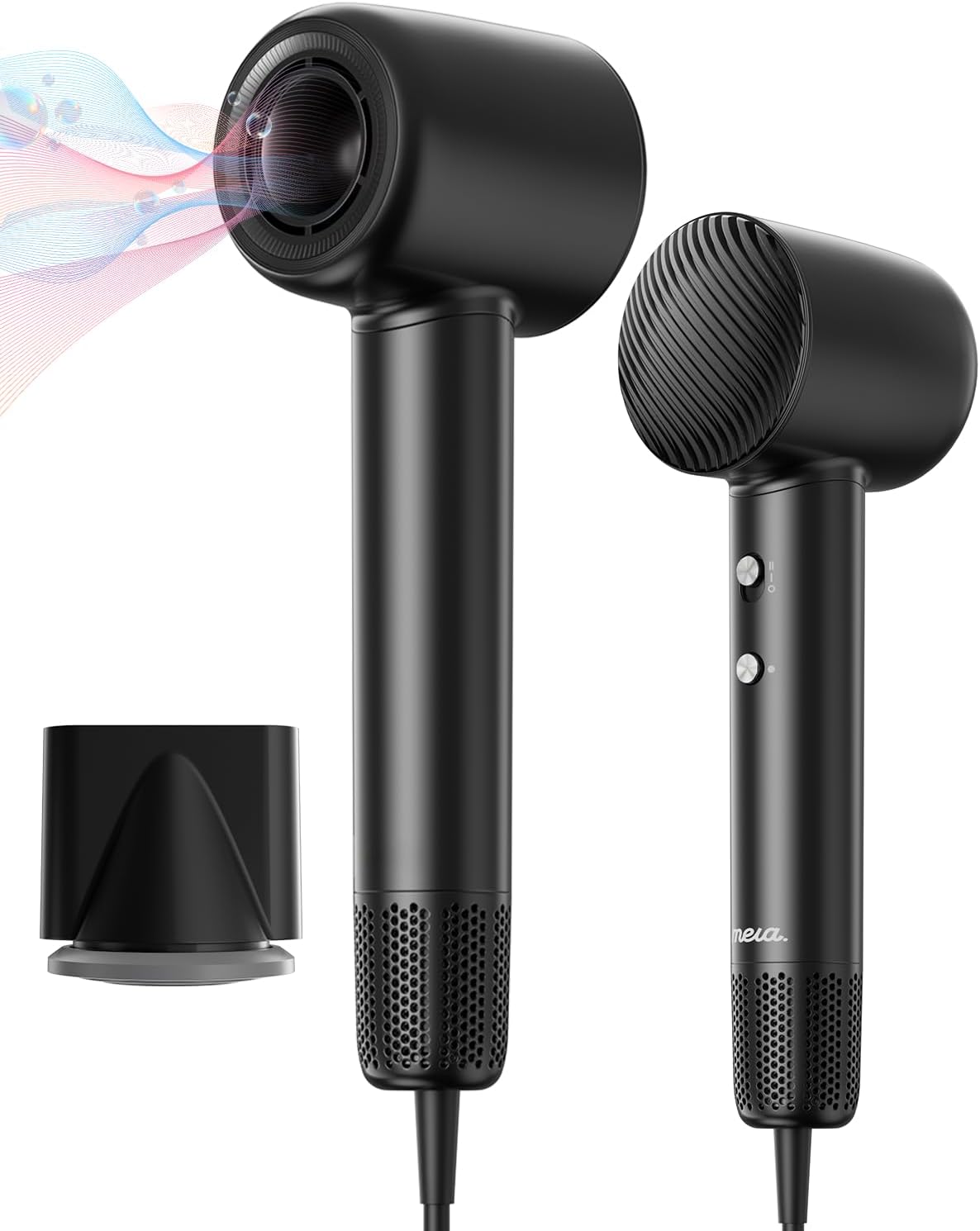
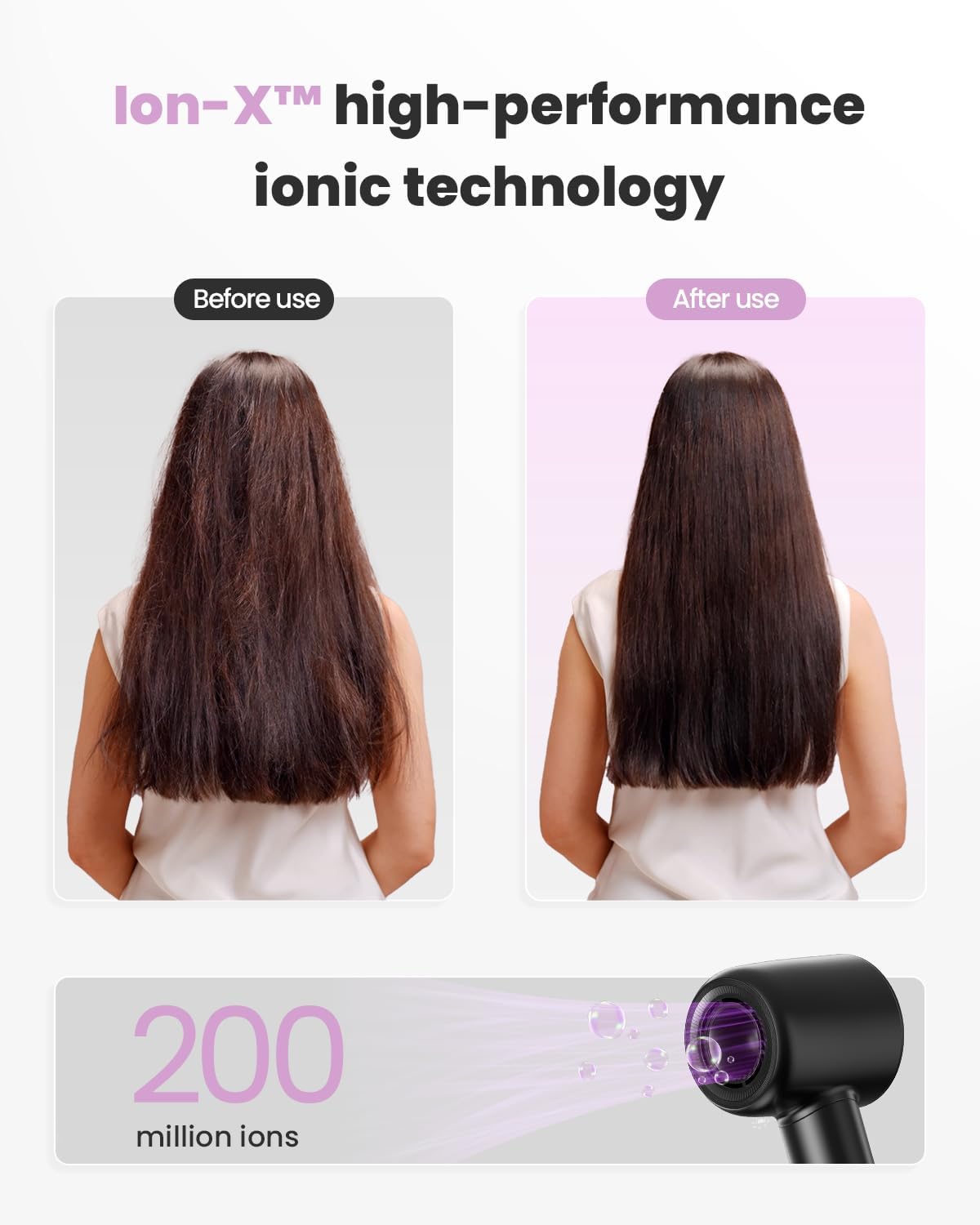
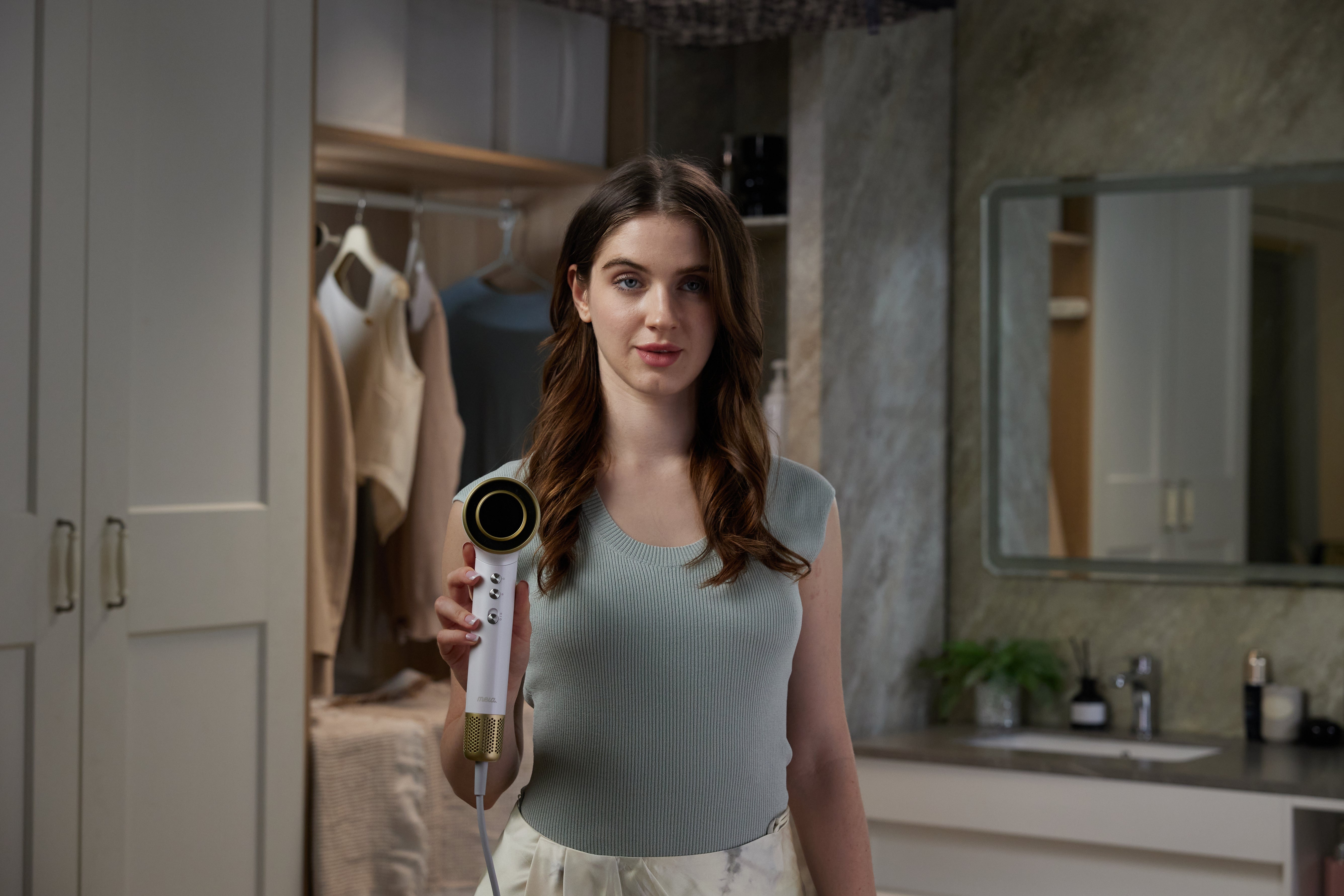


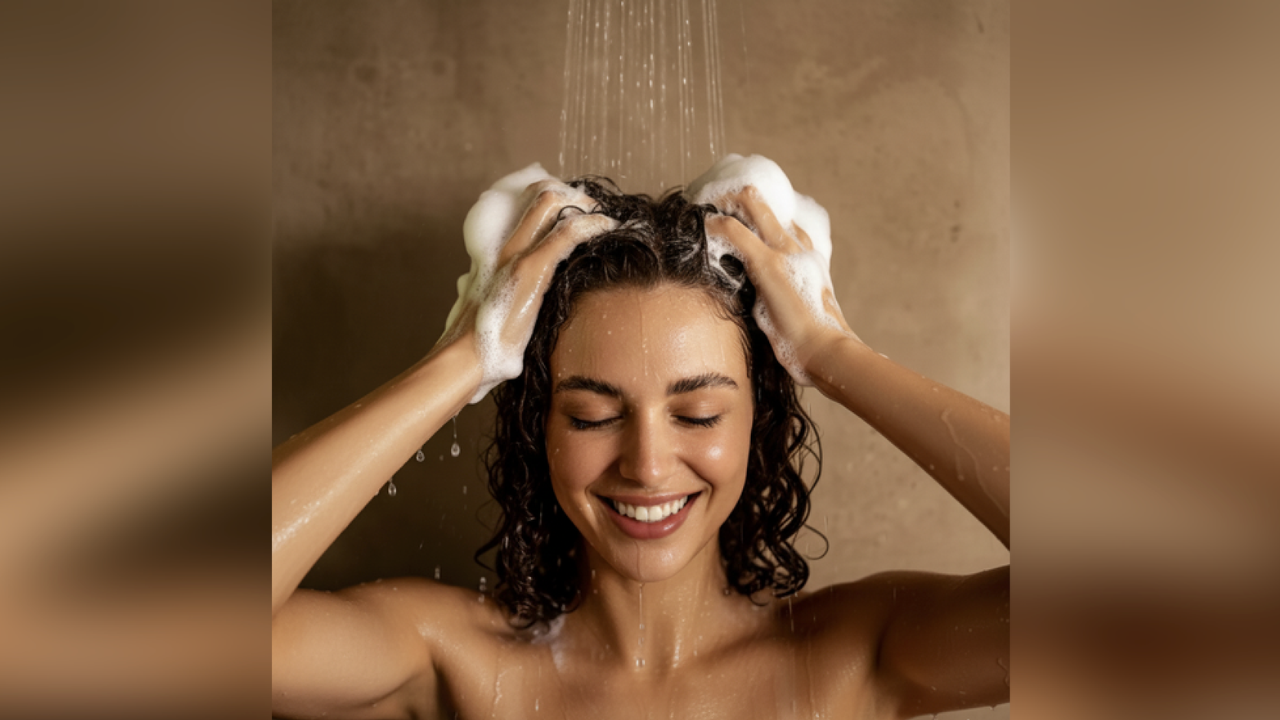
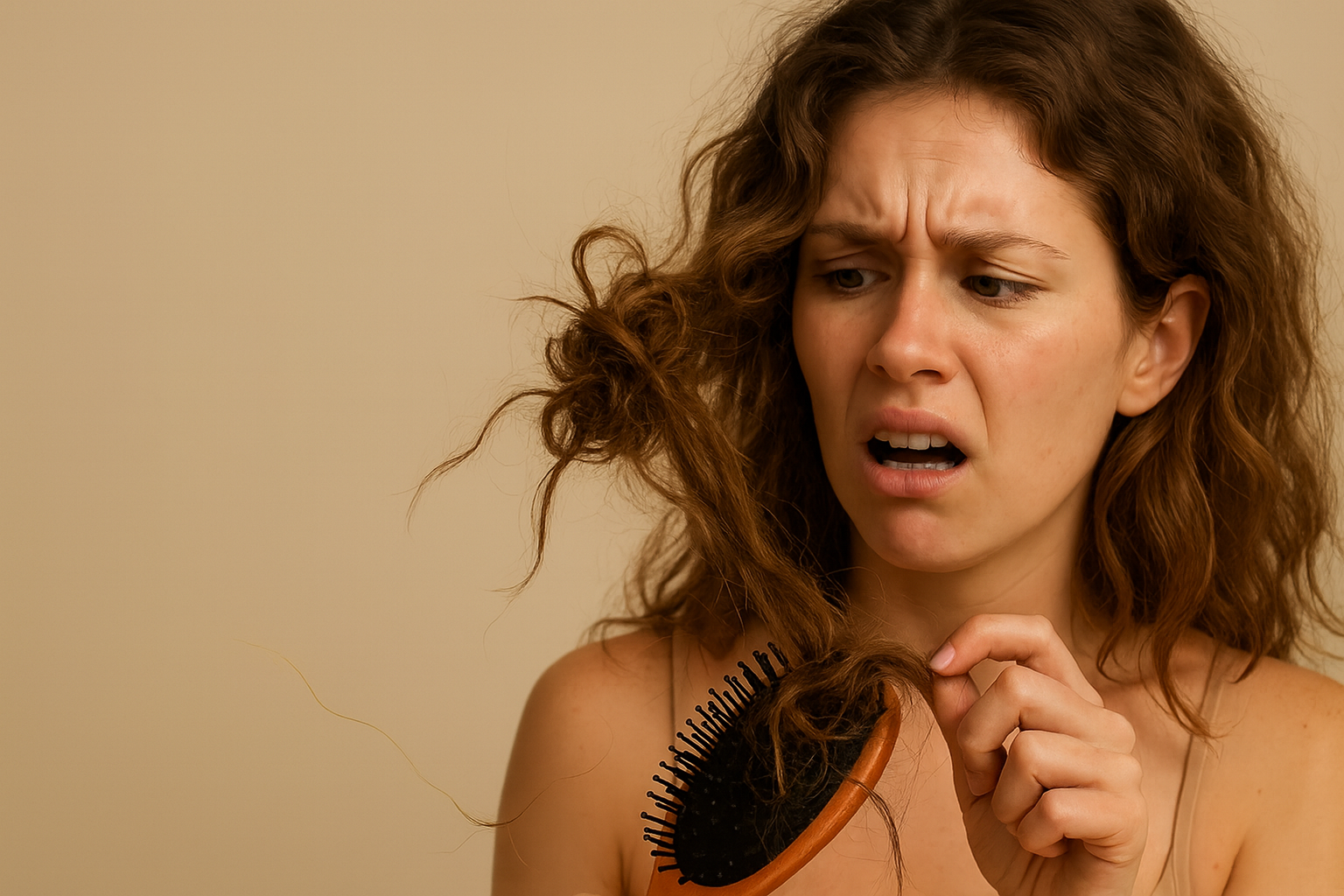
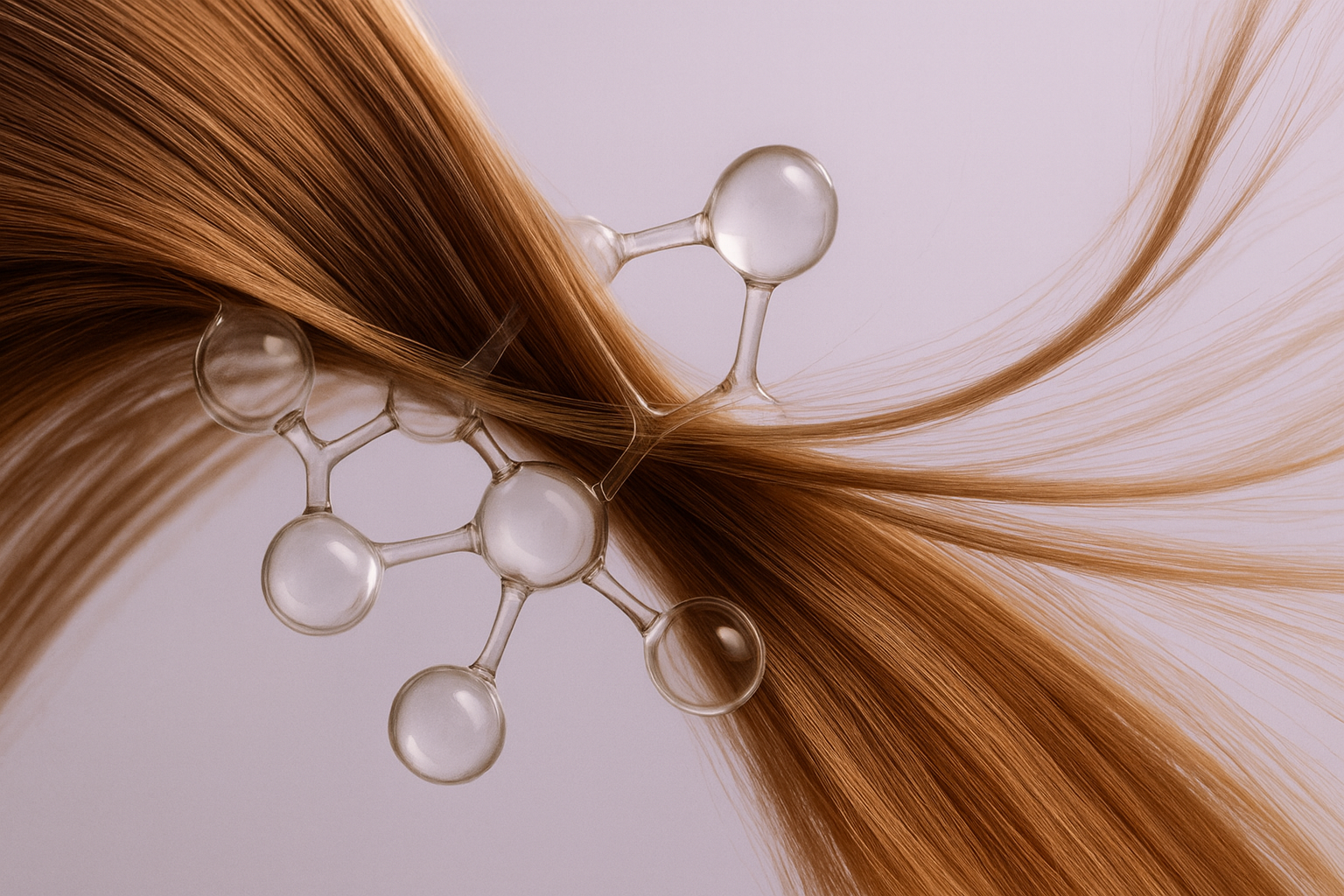
Share: